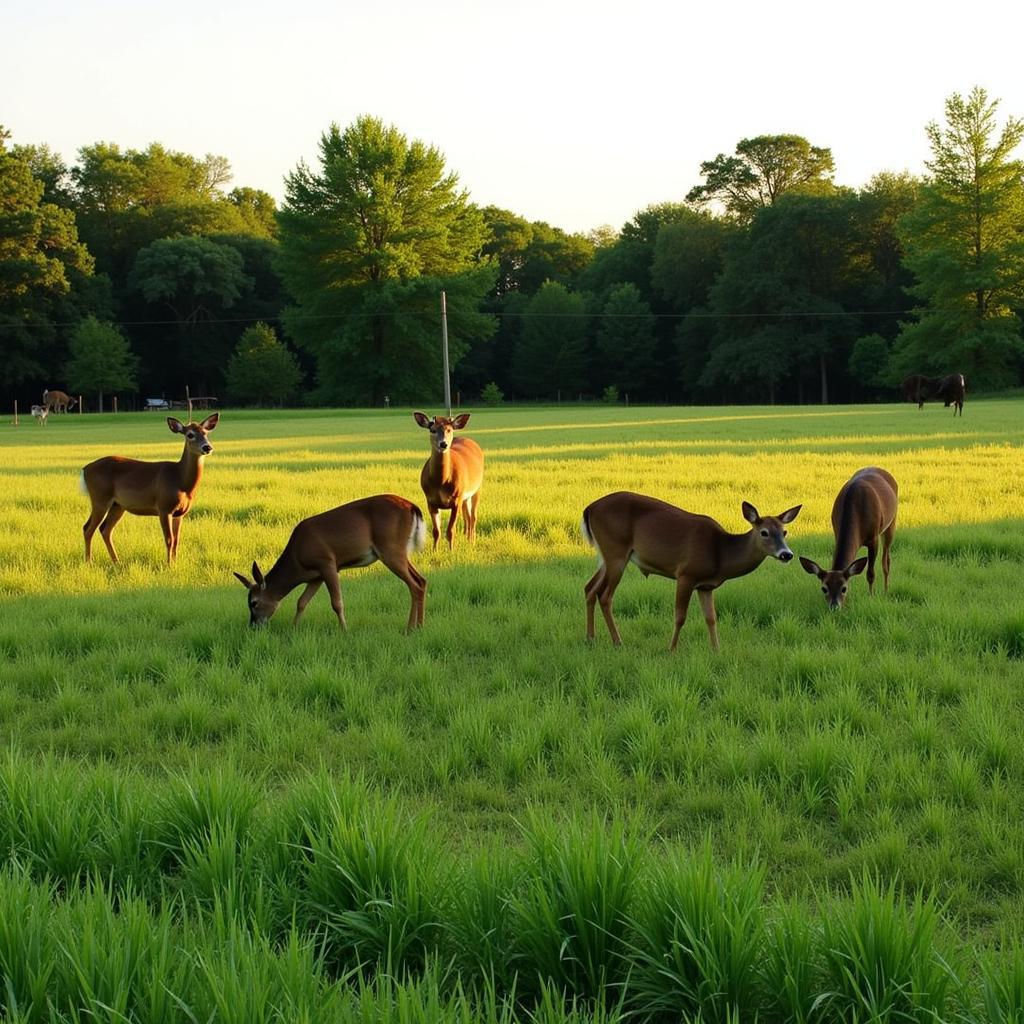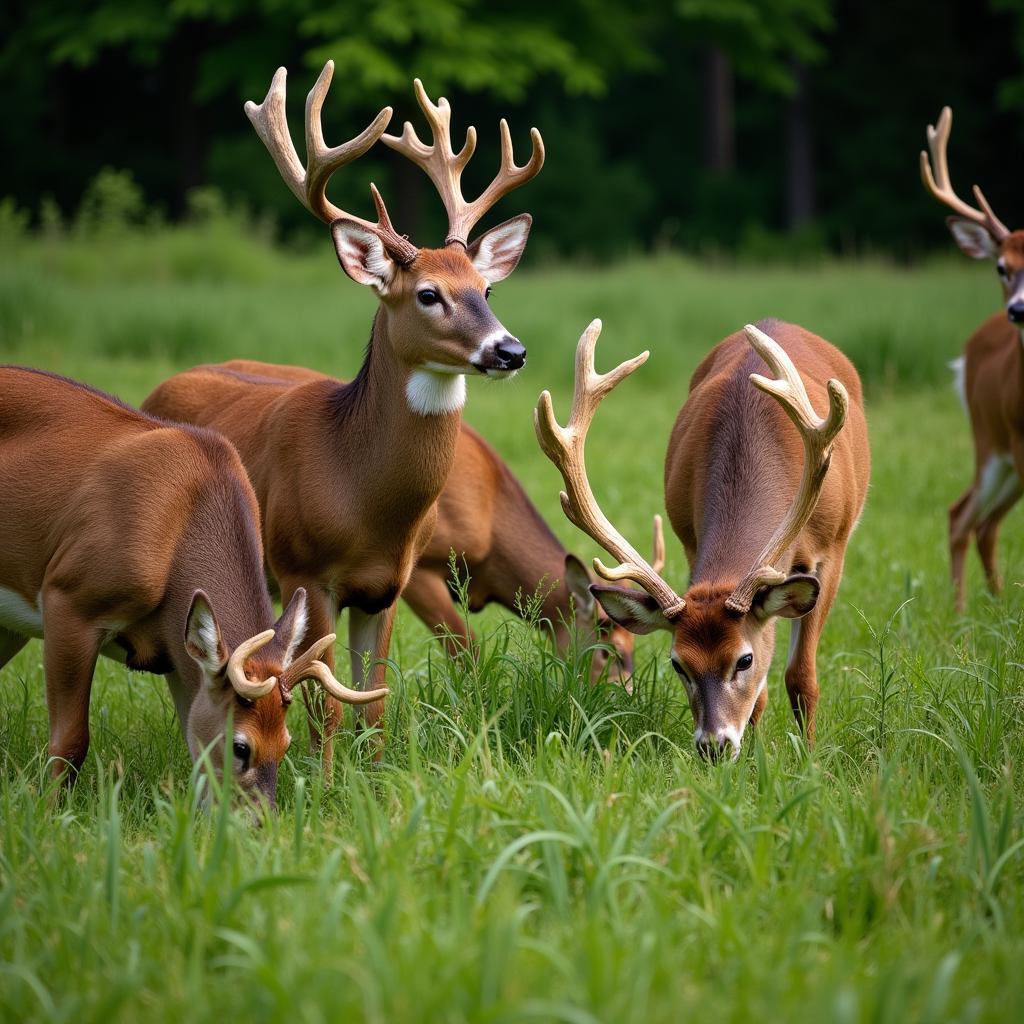Understanding how many deer a 1-acre food plot can support is crucial for successful deer management and hunting. It’s not a simple one-size-fits-all answer, as several factors influence the carrying capacity of your food plot. These include the quality of the forage, the local deer population density, the availability of natural food sources, and the time of year. Let’s delve into the details to help you maximize your food plot’s potential.
Factors Affecting Food Plot Capacity
The number of deer supported by a 1-acre food plot isn’t fixed. Several variables come into play, creating a dynamic relationship between the food source and the deer population.
Forage Quality
The type of plants you choose for your food plot directly impacts its nutritional value and attractiveness to deer. High-quality forage, like clover or alfalfa, will support more deer than a plot with less nutritious plants. Choosing the right monster buck food plot seed can make all the difference.
Deer Density
The local deer population density significantly influences how quickly a food plot is consumed. In areas with a high deer population, a 1-acre plot might be depleted quickly, while in areas with fewer deer, it could last much longer.
Natural Food Availability
The abundance of natural food sources surrounding your plot plays a crucial role. If natural forage is scarce, deer will rely more heavily on your food plot, increasing the demand and potentially exceeding its capacity. Conversely, if natural food is plentiful, deer might only visit the plot occasionally.
Time of Year
Seasonal changes dramatically affect deer feeding patterns. During the spring and summer, when natural forage is abundant, deer might not utilize a food plot as much. However, during the fall and winter, when natural food sources become scarce, your plot becomes a critical food source. Planting the right food plot seed for spring can help ensure year-round attraction.
 Deer Feeding on a One-Acre Food Plot
Deer Feeding on a One-Acre Food Plot
Estimating Deer Capacity
While providing an exact number is impossible, a general guideline is that a well-maintained 1-acre food plot can comfortably support 2-4 deer throughout the year, considering average conditions. This number can fluctuate depending on the factors discussed earlier.
Maximizing Your Food Plot’s Potential
To get the most out of your food plot, consider these strategies:
- Soil Testing: Analyze your soil to determine its nutrient composition and pH levels. This will help you choose the best best deer and turkey food plots and ensure optimal plant growth.
- Weed Control: Implement effective weed management practices to minimize competition and maximize forage production.
- Fertilization: Use appropriate fertilizers based on your soil test results to enhance plant growth and nutritional content.
- Plot Rotation: Consider rotating your food plot location every few years to prevent soil depletion and disease buildup. A throw and go food plot can be a great option for rotation.
 Measuring Food Plot Acreage for Deer Management
Measuring Food Plot Acreage for Deer Management
“Understanding your land and the deer that inhabit it is the key to successful food plot management,” says wildlife biologist Dr. Sarah Jones. “Don’t just plant and forget. Active management is essential for maximizing your plot’s potential and supporting a healthy deer herd.”
Food Plot Management and Maintenance
Maintaining a healthy and productive food plot requires ongoing effort. Regular monitoring and maintenance are essential for long-term success. Using the right food plot seed spreader will ensure even distribution and optimal growth.
“Regularly scouting your food plot allows you to identify potential issues early on,” advises experienced hunter and outdoorsman, John Miller. “This could be anything from weed infestations to browsing pressure exceeding the plot’s capacity. Addressing these problems promptly is crucial for maintaining a productive food source.”
 Healthy Deer in a Well-Maintained Food Plot
Healthy Deer in a Well-Maintained Food Plot
Conclusion
Determining how many deer a 1-acre food plot can support is a complex question with no definitive answer. However, by considering factors like forage quality, deer density, natural food availability, and the time of year, you can make informed decisions about your food plot management and maximize its potential to support a healthy deer population.
FAQ
-
What is the best time to plant a food plot? This depends on the type of seed and your local climate, but generally, spring and fall are ideal.
-
How often should I fertilize my food plot? Soil testing will determine the frequency and type of fertilizer needed.
-
What are the best plants for a deer food plot? Clover, alfalfa, and various brassicas are popular choices.
-
How can I control weeds in my food plot? Herbicides, mowing, and hand-pulling are common methods.
-
What are the signs of overgrazing? Stunted plant growth, bare patches, and increased deer browsing on surrounding vegetation.
-
How can I improve the soil quality in my food plot? Soil testing, adding amendments like lime, and rotating crops can help.
-
What is the importance of a food plot for deer? Food plots provide supplemental nutrition, especially during crucial times like winter and early spring.
Need assistance with your food plot? Contact us! Phone: 02437655121, Email: minacones@gmail.com. Or visit us at 3PGH+8R9, ĐT70A, thôn Trung, Bắc Từ Liêm, Hà Nội, Việt Nam. We have a 24/7 customer support team.